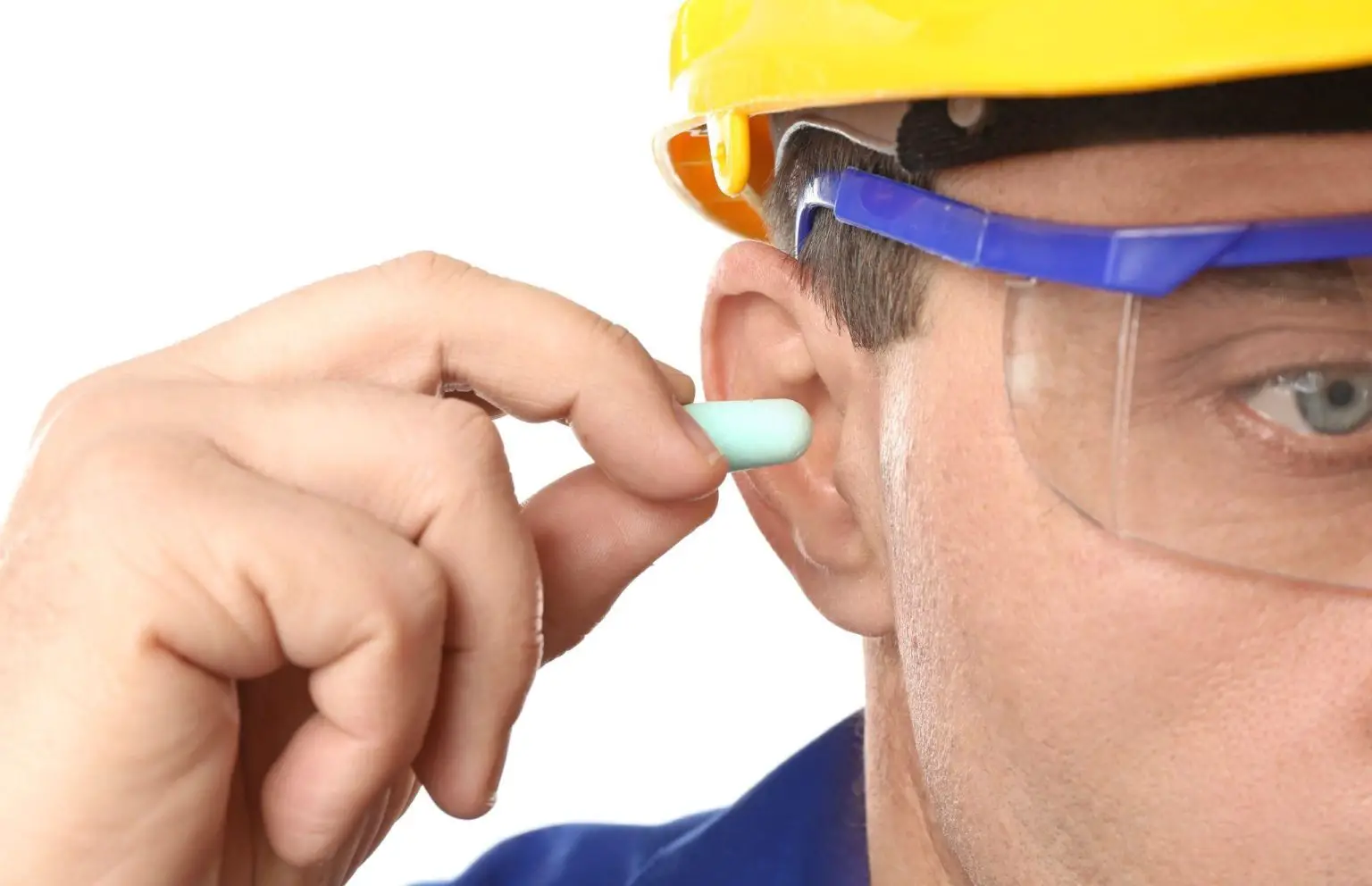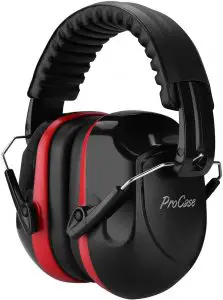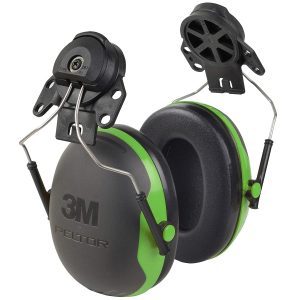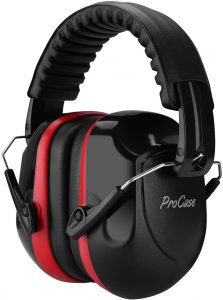Prolonged exposure to high decibels of noise in any occupation may lead to hearing damage or even loss if the right protective gear is not worn, so hearing protection in the workplace is very important.
Work-related hearing loss is a big issue when it comes to an individual’s safety and health. It is especially common in industries like mining, manufacturing, and construction.
What Constitutes Too Much Noise?
Annually, 22 million workers experience hazardous noise levels at their place of employment. The National Institute for Occupational Safety and Health Recommended Exposure Limit for noise is 85 decibels. This is the limit that an individual can experience occupational noise without wearing hearing protection.
Two factors influencing occupational exposure limits are the exchange rate and criterion levels. Criterion levels are established as the ongoing, steady level of noise permitted in an eight-hour shift. When noise goes beyond this established level, the time of exposure without protective gear needs to be decreased to avoid hearing damage/loss.
Maximum exposure, in this case, is the maximum rate of being exposed to loud levels of noise and is calculated using the exchange rate.

How Do High Levels of Constant Noise Damage Hearing?
Constant loud noises for long durations damage cells found in the inner ear. Hair cells located in the cochlea convert sound vibrations to electric signals. From there, our brains interpret the sounds. Long-term exposure causes irreparable damage to the cells. Hearing loss is permanent.
Unfortunately, 30-50% of the cells can be destroyed before the loss of hearing is detected by a hearing test. As mentioned, once it is lost, it cannot be restored. Furthermore, outside of damaged cells, loud levels of noise damage the auditory nerve that carries sound signals to the brain.
If your workplace can’t reduce noise exposure, employees need to invest in hearing protection.
What Do You Look for to Protect Your Hearing?
There are many products available, but the Center for Disease Control and Protection breaks them down into three areas.
- Become familiar with how much noise reduction is required. While the first consideration is to block out enough noise to return to normal levels, most industrial noise exposures are no more than 95 dBA. Therefore, workers may need ear protection that reduces noise by 10 dB.
Most properly fitted hearing protectors can cover this sound reduction. If you are unsure of the levels in your workplace, you can use this app to find them.
- Consider your job and workplace. You need to think about what other equipment is required before buying hearing protection. Do you wear any personal protective equipment on your head? This would include construction hats, respirators, and eye protectors.
Other factors to consider
Eye protectors may interfere with how some ear protectors fit. You want a firm seal covering the ear so that sound is effectively dampened. Also, earmuffs can interfere with wearing helmets, hard hats, or any device covering the head. Whatever you choose must be compatible with all other protective gear.
Is the work noise intermittent or continuous? Are you always in the same location throughout the day? This will determine whether you need earplugs or earmuffs. For exposure that fluctuates, sound restoration or level-dependant protectors allow sound to come through when noise levels are lower. They protect your ear when the noise rises.
The level of cleanliness is also a factor in protective gear. If you are in a dirty environment, you may not want to wear foam earplugs, which require users to roll them down before insertion.
Your environment may play an additional role. Earmuffs may not be desirable in hot climates, and the cushions may lose their effectiveness in extreme cold. Also, you need to consider those speaking to you. If there is frequent communication or music playing, special communication headsets may be an asset.
- What will ultimately be convenient and comfortable? After the choices have been narrowed down, your selection will be a matter of preference. Protection for hearing works only when used properly, so be sure that you are familiar with how it works.
Types of Hearing Protection Devices
Here are the main types of hearing PPE used in workplaces:
-
Earplugs: Inserted into the ear canal (foam, pre-molded, or custom).
-
Earmuffs: Cups cover the ears entirely; good for heavy duty or when earplugs are uncomfortable.
-
Canal-caps / semi-insert: Hybrid options, useful for intermittent loud noise.
-
Electronic/level-dependent protectors: Reduce noise but allow communication or warning signals; useful in variable-noise environments.
How to Choose the Right Hearing Protection
When selecting hearing protection for a workplace, it’s not just about grabbing the highest Noise Reduction Rating (NRR). Here’s what to consider:
Noise Reduction Rating (NRR) & Fit
-
NRR indicates potential decibel reduction under ideal conditions.
-
Real‐world performance tends to be less—correct fit and consistent use matter hugely.
-
Ensure the protection brings the in-ear noise level to a safe level (for many standards ~80 dB(A) or lower).
Comfort, Compatibility & Communication
-
Protection that’s uncomfortable or blocks communication will often be removed by workers. Comfort, compatibility with other PPE (helmets, eye protection, respirators), and ability to hear warning tones matter.
-
Over-protection (too much attenuation) can isolate the user or prevent hearing alarms.
Environment & Noise Type
-
Continuous high noise vs intermittent/impulse noise require different protection strategies.
-
Hot, dirty, dusty, or helmeted environments may favour earmuffs or specific earplugs.
Training and Maintenance
-
Even the best gear fails if incorrectly used. Training workers on proper insertion, fit, and maintenance is critical.
Comparison Table: Best Hearing Protection on the workplace
Product |
Image |
Noise Reduction Rating (NRR) |
Type |
Key Features |
Ideal For |
Pros |
Cons |
|---|---|---|---|---|---|---|---|
 |
28 dB (SNR 34 dB) |
Over-Ear (Passive) |
Solid ABS shell, thick foam padding, adjustable headband, 360° rotating cups, foldable design |
Construction, lawn mowing, shooting ranges, factory work |
High noise reduction Adjustable for adults & kids Comfortable padded design Portable and foldable |
Feels tight initially Bulky for small heads |
|
 |
21 dB |
Over-Ear (Hard Hat Mount) |
Advanced foam inserts, soft ear cushions, tilting earcups, ABS plastic cups, replaceable hygiene kit |
Construction, manufacturing, automotive, maintenance |
Hard hat compatible Durable industrial build Comfortable and replaceable parts |
Not for extremely high-noise areas Industrial-only use |
|
 |
25 dB |
In-Ear (Bluetooth, Wireless) |
True wireless design, SafeMax 85 dB limit, noise-canceling mics, IP45 water/dust resistant, 21-hour battery life |
Construction, workshops, DIY, commuting |
OSHA-approved Bluetooth and clear calls Compact and comfortable fit Long battery life |
More expensive than passive muffs Needs charging |
Best Hearing Protection in the Workplace
In examining the best protection for your hearing, we looked at how many decibels of noise were blocked out and examined the styles of hearing protection. Since not every hearing protection device will work for all workplaces, we have incorporated a variety of each available product on the market.
1. Best Noise Reduction Headphones: ProCase Noise Reduction Safety Ear Muffs

The ProCase Noise Reduction Ear Muffs deliver exceptional hearing protection with a Noise Reduction Rating (NRR) of 28 dB (SNR 34 dB) — certified ANSI S3.19 (US). Built with a solid ABS shell and thickened foam padding, these earmuffs effectively reduce harmful noise levels, making them ideal for workplaces, shooting ranges, construction sites, and lawn mowing.
The adjustable ergonomic headband and 360° rotatable ear cups ensure a customizable fit for both adults and kids. While snug at first, the earmuffs can be stretched for added comfort. A soft padded headband and spacious ear cups enhance breathability during long wear, reducing pressure and ear fatigue.
Compact and foldable, these earmuffs are easy to store and carry — perfect for workers on the go. Whether you’re operating heavy machinery, studying in noisy environments, or protecting a child with sound sensitivity, the ProCase Ear Muffs offer reliable comfort, durability, and excellent hearing protection at an affordable price.
- Thick foam dampens noise
- Ear cups rotate 360° and fits any age group
- Folds compactly when not in use
- Can be used in the following occupations: firearms, woodworking, lawn care, landscaping, construction, or working with heavy machinery
- Thicker material
- Imitation leather may cause perspiration
2. Best to Accommodate Head Gear: 3M Peltor Ear Muffs

The 3M PELTOR X1 Series Ear Muffs are engineered for professionals who work in construction, manufacturing, automotive, or maintenance environments. With a Noise Reduction Rating (NRR) of 21 dB, these earmuffs deliver reliable hearing protection for low to moderate noise exposure, making them ideal for everyday industrial use.
Built with advanced foam earcup inserts and spacers, the X1 provides enhanced noise attenuation, while soft ear cushions and tilting pivot points ensure a comfortable, secure fit for long shifts. The ABS plastic cups offer excellent durability and impact resistance — perfect for demanding work conditions.
Designed to attach to a hard hat, this model integrates seamlessly into professional safety gear. Plus, the replaceable cushions and inserts make maintenance easy and extend product life.
- Specially designed for manufacturing plants, construction, automotive industries, and woodworking facilities
- Cushions and inserts are replaceable for increased hygiene
- Can fit full-brim hard hats
- Not extremely lightweight
- May not fit on all brands of construction helmets
3. Best Earbuds: ISOtunes True Wireless Earplug Earbuds

The ISOtunes Free 2.0 brings innovation to workplace safety by combining premium Bluetooth audio with OSHA-approved hearing protection. With a certified Noise Reduction Rating (NRR) of 25 dB and an 85 dB SafeMax™ volume limit, these true wireless earbuds keep your hearing safe while letting you take calls or listen to music on the job.
Designed for all-day comfort, they offer 7 hours of battery life per charge plus 14 extra hours from the compact charging case. Multiple foam and silicone eartips ensure a snug, custom fit that stays comfortable through long shifts. Built-in noise-canceling microphones provide crystal-clear calls, even in loud environments like construction sites or workshops.
Durable and reliable, these earbuds feature IP45-rated protection against sweat, dust, and water — perfect for demanding workplaces or DIY projects.
- Discrete, cordless solution
- 21-hour battery
- Portable charging case
- May not work well in very loud environments
- Need to have clean hands to remove
Best Practices for Use & Maintenance
-
Inspect hearing protection daily — look for cracks, damaged cushions, or loss of seal.
-
Clean and replace earplugs/earmuff parts as recommended by manufacturer.
-
Store in a clean, dry place.
-
Train employees on how to insert earplugs properly (e.g., foam plugs must expand in the ear canal).
-
Check fit when workers wear other PPE (helmets, glasses) which may compromise seal.
-
Monitor noise levels regularly and review whether existing protection is adequate.
Frequently Asked Questions
1. Why is hearing protection important in the workplace?
Hearing protection is essential to prevent noise-induced hearing loss (NIHL) caused by long-term exposure to loud machinery, tools, or environments above 85 decibels (dB). Continuous exposure can damage the inner ear, leading to permanent hearing loss or tinnitus. Using earplugs, earmuffs, or noise-canceling devices helps reduce noise levels and protect workers’ hearing health.
2. What are the main types of hearing protection?
There are three primary types of workplace hearing protection:
-
Earplugs: Fit directly in the ear canal and are ideal for consistent noise protection. Available in disposable foam, reusable silicone, or custom-molded styles.
-
Earmuffs: Cover the entire ear and provide superior protection in high-noise environments. Often adjustable and comfortable for extended wear.
-
Electronic/Bluetooth Ear Protection: Combines noise reduction with audio features for communication or entertainment—perfect for modern worksites.
3. What is NRR, and why does it matter?
NRR (Noise Reduction Rating) measures how effectively a hearing protection device reduces noise, expressed in decibels (dB). The higher the NRR, the better the protection.
-
For example:
-
20–25 dB: Suitable for moderate noise (offices, workshops)
-
25–30+ dB: Ideal for high-noise areas (construction, manufacturing, shooting ranges)
Always choose an NRR that matches your work environment’s noise level.
-
4. How do I know which hearing protection is right for me?
Consider the following when choosing workplace hearing protection:
-
Noise level: Measure average sound levels using a sound meter or workplace safety data.
-
Comfort & fit: Select protection that fits securely without pressure or irritation.
-
Communication needs: If you need to take calls or hear coworkers, go for Bluetooth or electronic hearing protection.
-
Work conditions: For dusty or wet environments, look for IP-rated (water/dust-resistant) options.
5. How often should hearing protection be replaced?
-
Disposable earplugs: Replace after each use to maintain hygiene and effectiveness.
-
Reusable earplugs: Replace every 2–4 weeks or when they show wear or lose shape.
-
Earmuffs: Replace ear cushions and foam inserts every 6 months or sooner if damaged.
-
Electronic/Bluetooth devices: Clean regularly and check for battery health; replace eartips as needed.
Regular replacement ensures consistent noise reduction and hygiene.
Conclusion
Hearing protection in the workplace isn’t just about having gear — it’s about choosing the right gear, ensuring proper fit, and using it consistently.
Noise control should start with engineering and administrative measures, but when those aren’t enough, correctly selected and worn hearing protectors become essential. With the guidelines above and the recommended product list, you’ll be well- equipped to keep workplace hearing safe and sound.
Related Resources:
- Industrial Safety Helmet vs Hard Hat: What Are the Differences?
- Classification Of Personal Protective Equipment PPE
- The Advantages of Vented Hard Hats for Hot and Humid Work Environments
- Top 5 Full Brim Hard Hats for Construction and Landscaping
- 6 Best Construction Worker Uniform Items That Are Durable & Tough
- Protective Industrial Products: Everything You Need To Know
- 10 Common Construction Hazards and How to Prevent Them
